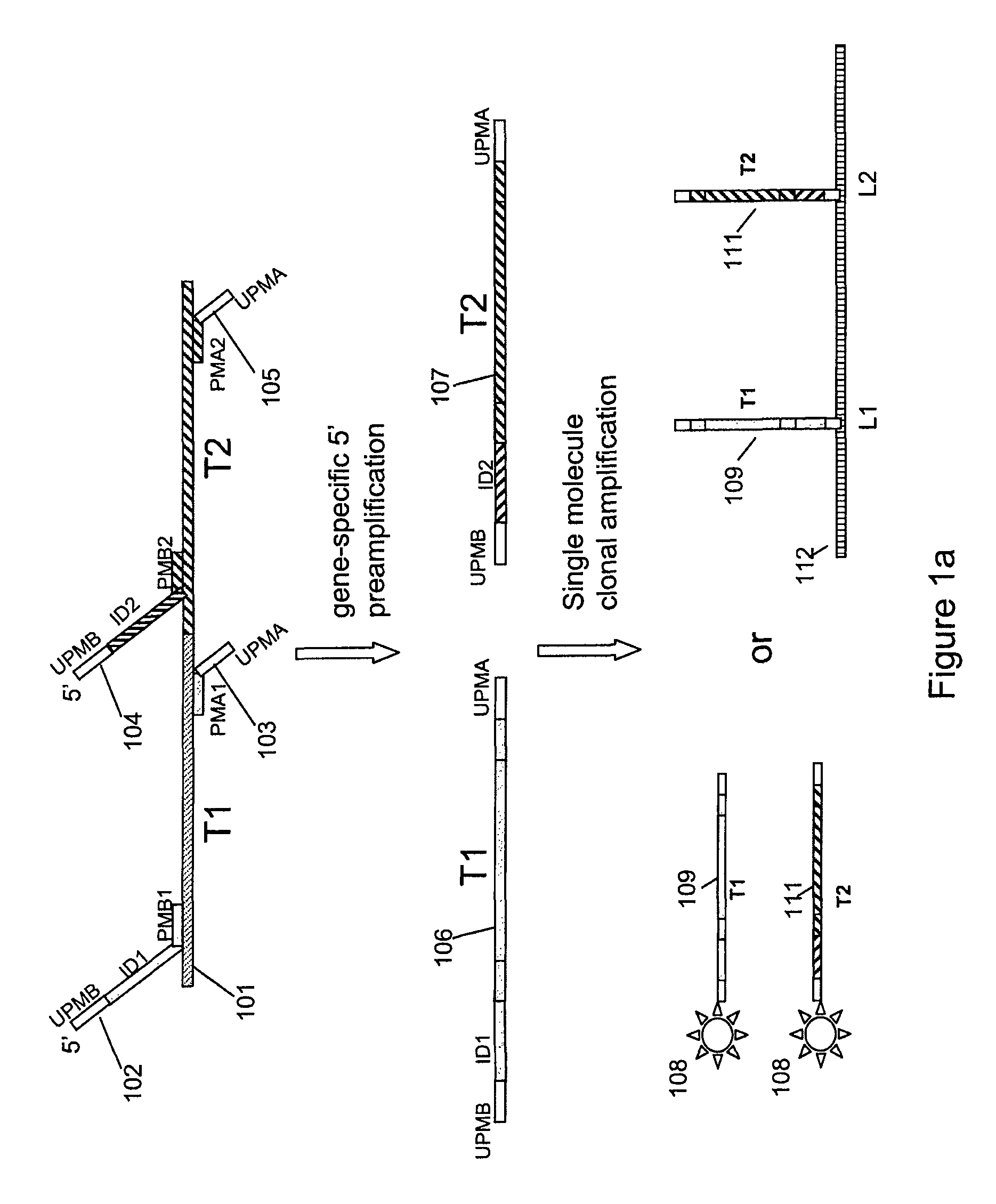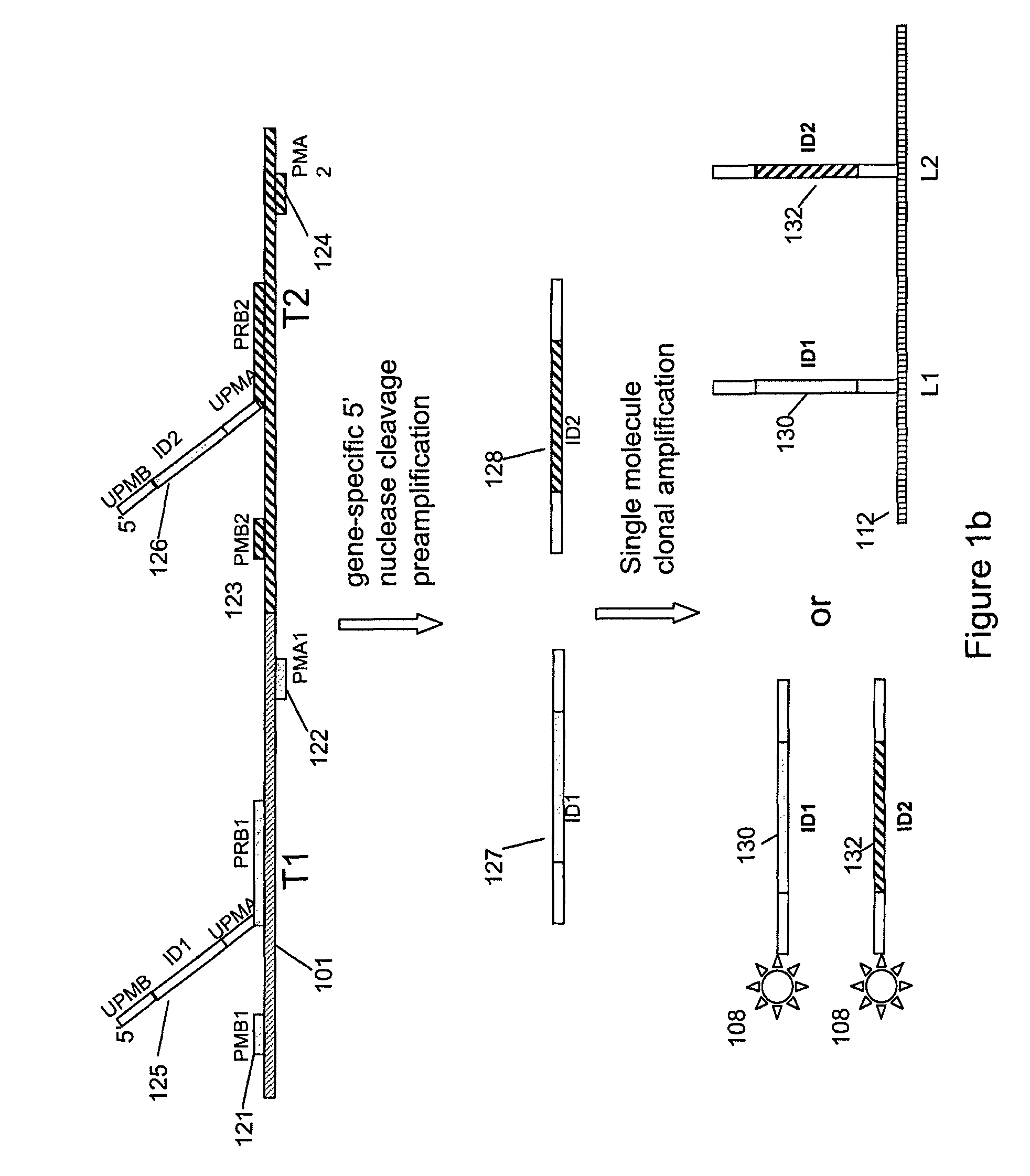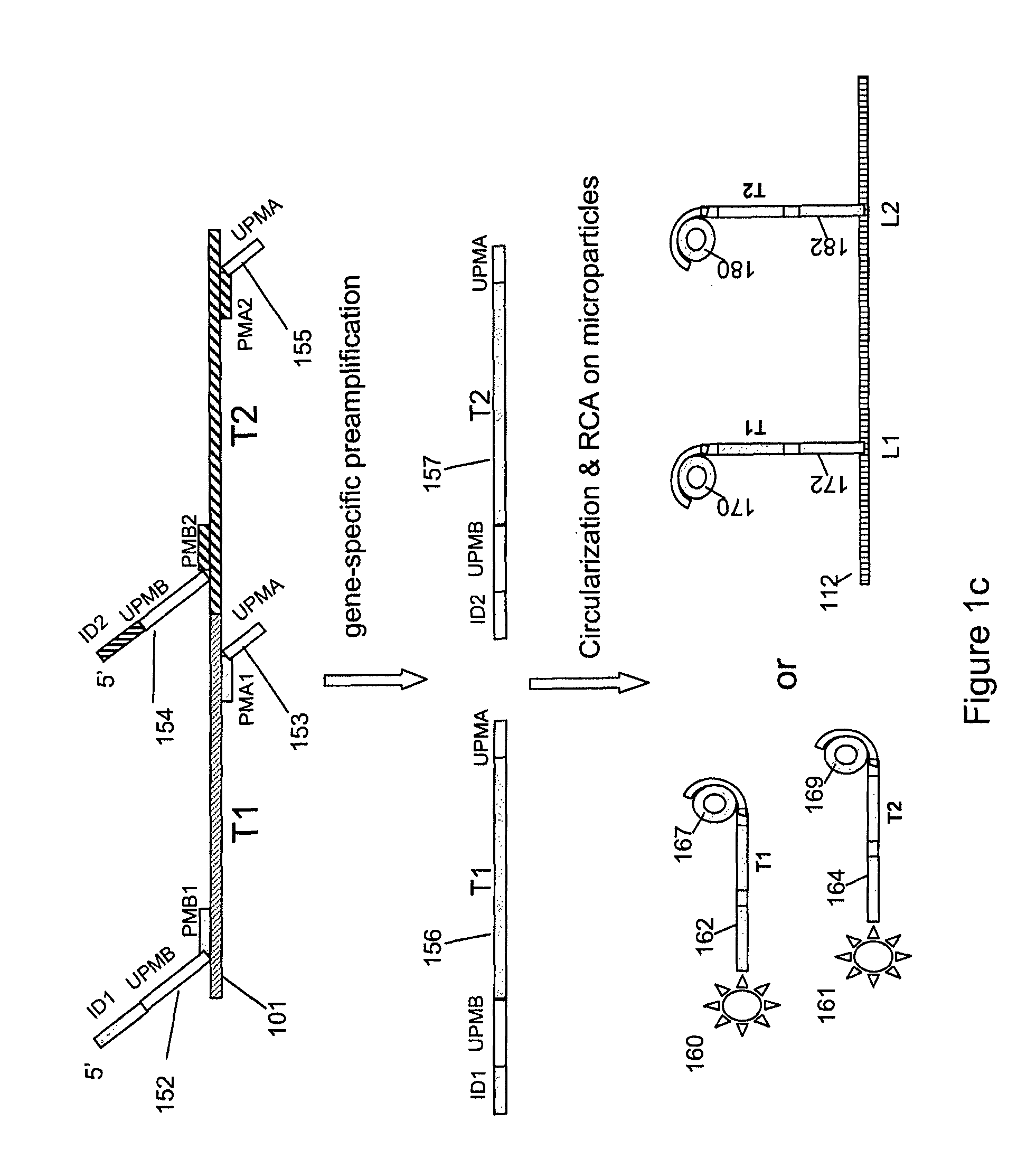Multiplex nucleic acid detection methods and systems
a detection method and nucleic acid technology, applied in the field of multi-complex nucleic acid detection methods and systems, can solve the problem that digital pcr methods have limited multiplex capability, and achieve the effect of reducing the effect of magnetic field
- Summary
- Abstract
- Description
- Claims
- Application Information
AI Technical Summary
Benefits of technology
Problems solved by technology
Method used
Image
Examples
example 1
Multiplex Genetic Testing for Early Cancer Detection
[0138]It is widely accepted that cancer is caused by accumulation of genetic changes of oncogenes, tumor-suppressor genes, and stability genes, including mutation and methylation of these genes. So far, many genetic changes have been identified as cancer biomarkers. It is evident from past cancer biomarker research that a better method of cancer detection is simultaneously testing a panel of genes that are involved in a particular cancer, instead of just a single gene. This invention provides a useful tool to detect low abundance biomarkers in a large background in highly multiplexed assays.
Early Detection of Colorectal Cancer
[0139]Colorectal cancer (CRC) is the third leading cause of cancer-related deaths in the United States when men and women are considered separately, and the second leading cause when both sexes are combined. American Cancer Society (ACS) recommends routine screenings starting at aged 50. CRC is highly curable ...
example 2
Quantitative Multiplex Nucleic Acid Analysis
[0150]Quantitative analysis of 20 single base mutations on genomic DNA as follows.[0151]Step 1. Target encoding 20 template molecules of the target sequences on genomic DNA are prepared by gene specific preamplification using 4-base IS tags (ID1 to ID20) embedded primers, c.f. FIG. 1c. Asymmetric PCR is used in the preamplification to generate single strand template molecules that simplifies the clonal amplification.[0152]Step 2. Clonal amplification The prepared template molecules from step 1 are then circularized on extension oligonucleotides and clonal amplified by rolling circle amplification on 20 types of magnetic microparticles. The extension oligonucleotides on a magnetic microparticle contain a specific anti-IS tag sequence that ensures only one target sequence is specifically ligated and amplified on a given magnetic microparticle in this assay. The RCA is carried out isothermally by φ29 polymerase in solution. The ratio of magne...
PUM
| Property | Measurement | Unit |
|---|---|---|
| size | aaaaa | aaaaa |
| size | aaaaa | aaaaa |
| size | aaaaa | aaaaa |
Abstract
Description
Claims
Application Information
 Login to View More
Login to View More - R&D
- Intellectual Property
- Life Sciences
- Materials
- Tech Scout
- Unparalleled Data Quality
- Higher Quality Content
- 60% Fewer Hallucinations
Browse by: Latest US Patents, China's latest patents, Technical Efficacy Thesaurus, Application Domain, Technology Topic, Popular Technical Reports.
© 2025 PatSnap. All rights reserved.Legal|Privacy policy|Modern Slavery Act Transparency Statement|Sitemap|About US| Contact US: help@patsnap.com



